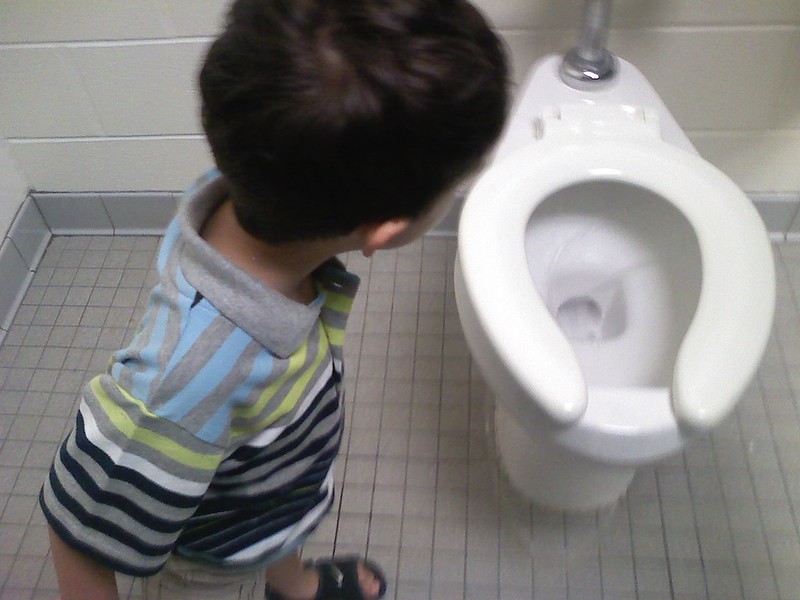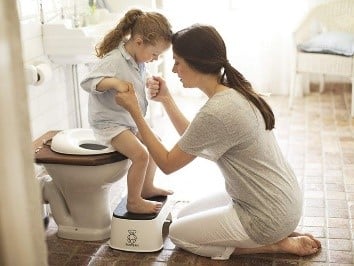 What do we mean by toileting?
What do we mean by toileting?
Toileting is a complex activity made up of smaller tasks, including being able to identify signs in the bowel and bladder that indicate a need to go to the toilet, finding a toilet, removing clothing, sitting on the toilet, passing urine/ stool movement, wiping as appropriate, dressing, and washing hands.
There is no universal criteria for toilet training success. Typically developing children tend to have daytime control between the ages of 2- 5 years, night-time control between 5-7 years, and usually demonstrate signs of physiological and developmental readiness. However, each child is different, and autistic children may have unique needs and characteristics that may bring about additional challenges when toilet training.
Autistic children face various challenges when it comes to learning toileting skills.
- Physiological differences or interoception differences may affect the child’s ability to recognise their internal body signals and respond to these sensations by going to the toilet.
- Presence of gastrointestinal issues or allergies.
- Motor and postural control differences may change the child’s ability to manage clothing, transfers, sitting balance, functional reach and coordination required for autonomous toileting.
- Communication differences may influence how they follow instructions and express their toileting needs.
- Sensory processing differences may reduce the child’s ability to access the toilet environment due to sensitivity to noises, lights, and odours in the bathroom.
- Emotional regulation differences, particularly high levels of anxiety and stress, may influence the child’s nervous system and bladder control.
Addressing these barriers is crucial for effective toilet training strategies tailored to the unique needs of autistic children.
Critical signs of readiness are more useful than starting at a particular ‘age’.
Are they ready?
Look for signs of readiness. These may include:
- PHYSIOLOGICAL: (bladder and bowel function): Dry for longer periods, regular bowel patterns, and shows awareness during bladder or bowel motions.
- DEVELOPMENTAL: Shows an interest in the toilet, can sustain sitting position, can transition to the toilet, can help with clothing removal, and shows a desire for privacy by hiding or removing self from others and independence.
Research recommends the following strategies during toilet training:
Develop healthy habits
- Fluid intake. Aim for approximately 50ml x child’s weight per day.
- Adequate fibre intake to support bowel health.
- Physical activity and exercise.
- Label body parts using anatomically correct language to support your child’s body autonomy and self-advocacy.
Make an attractive toileting environment
- Toilets can be very dull, uninteresting, and sometimes frightening spaces. And it may be a challenge to encourage a reluctant child into the toilet.
- The first step in the toileting journey is to create a safe, relaxing environment to support engagement and also set the stage for healthy toileting habits. Remember, voluntary release of wees and poos will mostly occur in an environment that your child feels comfortable, and their body is relaxed.
- For many neurodivergent children who prefer routine and consistency using a potty can add an extra challenge when the time comes to transition to the toilet. We recommend supporting the child to access the family toilet using adaptive equipment.
- Providing opportunities for the child to explore a variety of toilet environments e.g. when visiting friends/ family, in shopping centres, in schools can help the child be flexible and supports generalisation.
Supporting first steps
- Encourage your child to participate in motivating or simple steps of the toilet routine e.g., flushing the toilet, playing in the sink to wash their hands.
- Provide opportunities for your child to engage in aspects of toileting they find enjoyable to create positive associations and foster feelings of success and confidence.
- Transition all nappy changes to the toilet or bathroom area to promote familiarity with toileting environment and support generalisation.
Make it fun!
- Incorporate your child’s interests and sensory preferences into the toilet routine. Some examples may include: introducing toilet toys (that are only for the toilet), singing songs, adding stickers, or providing foaming or scented soap to make hand washing more enjoyable.
- It is important not to force any aspect of toileting as we want to foster confidence and positive memories with toileting.
- Praise all attempts and engagement with the toileting routine.
Keep calm and remember it’s a process
- When accidents do happen, support your child by taking them to the toilet and involve them in wiping and re-dressing. Support your child’s learning and confidence participating in the toileting by staying calm when accident happen. Let your child know they can try again next time.
Toileting is an important life skill and fosters a child’s sense of independence, health, and quality of life. However, toilet training is tricky and can be a frustrating process for children (and their parents). Remember to be patient while your child is learning and take a calm approach to the toilet training process. Always praise your child’s efforts and attempts to participate in toileting. It is also essential that you honour your child’s protests, rejections, or refusals to engage with any aspect of the toileting routine to foster body autonomy and positive associations with personal hygiene. Keep realistic expectations and take one step at a time.
If you have any concerns about your child’s toileting habits, please discuss with a member of your clinical team, a health professional or contact CliniKids on (08) 6319 1133 or clinikids.reception@thekids.org.au.
Photo credit (top): Laura Smith, Flickr. Below photos: Adaptive equipment such as stools can help children access the toilet. Make the the toilet environment engaging for children with toys and books.


